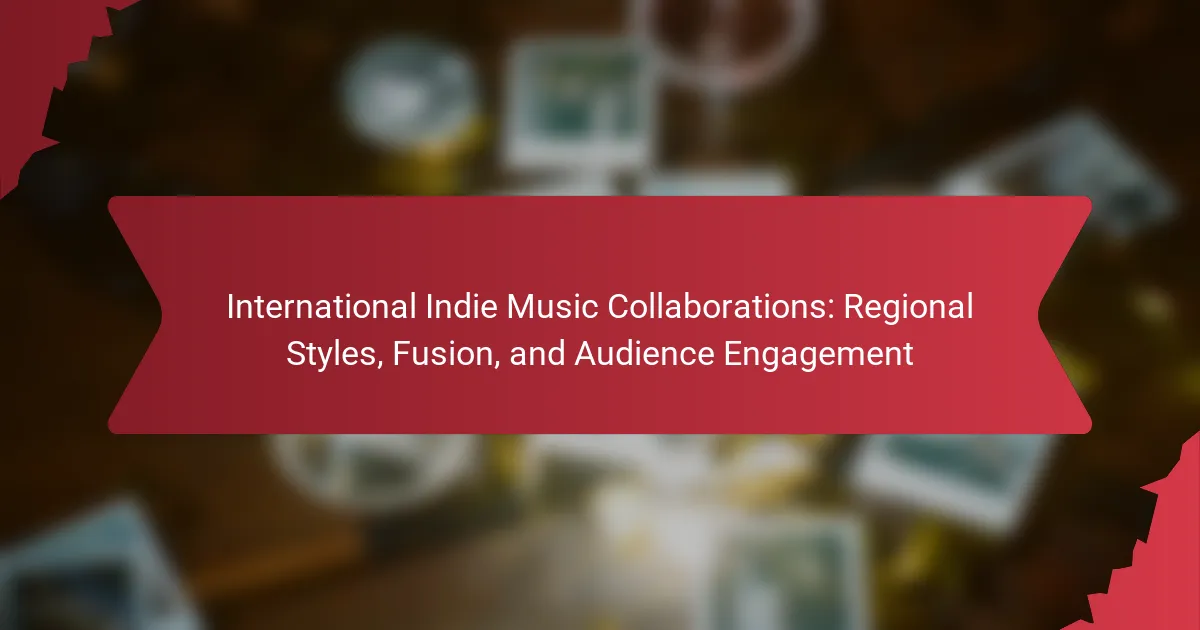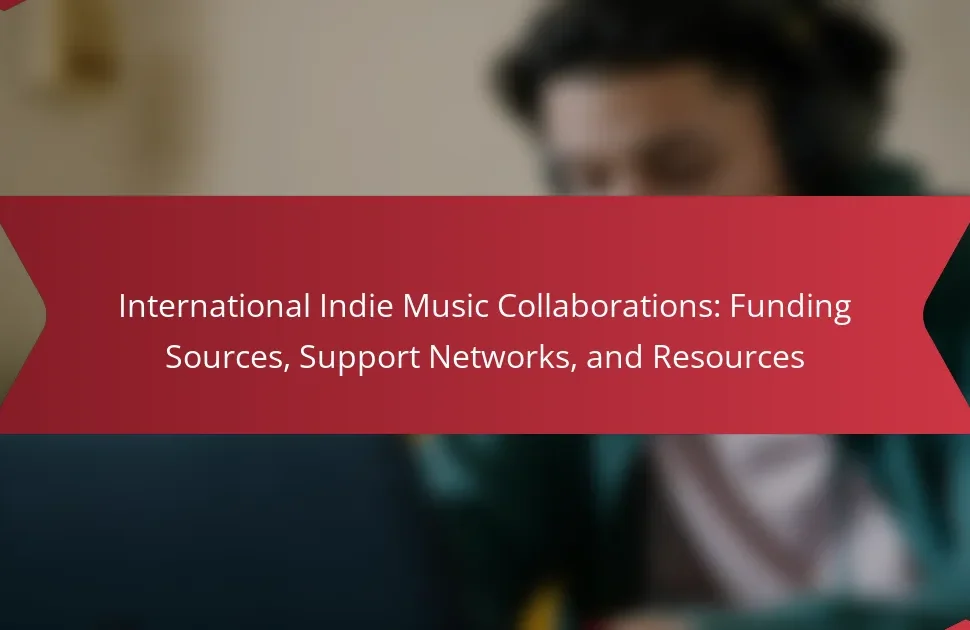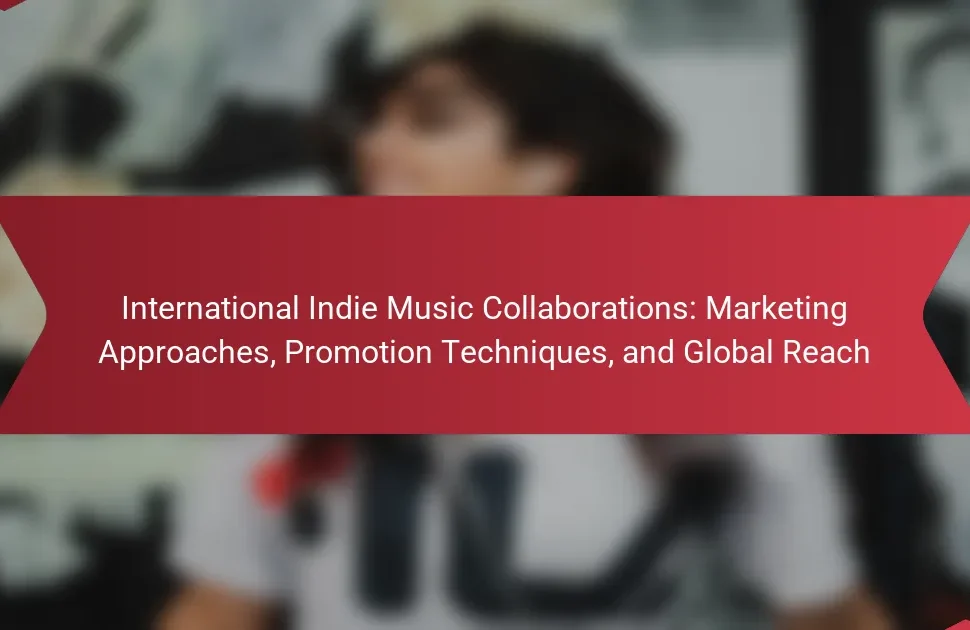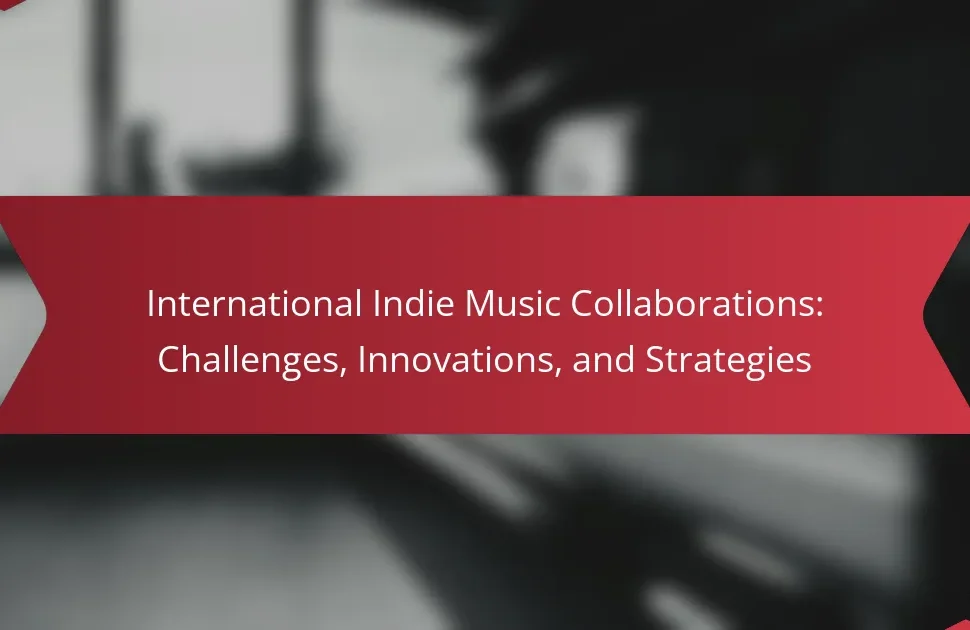International indie music collaborations offer a unique opportunity to blend regional styles and engage diverse audiences. These partnerships enhance creativity through musical fusion, while social media platforms like TikTok and Instagram amplify their reach. Understanding cultural differences is crucial for successful collaborations, as it fosters connection and enriches the final product. By measuring audience engagement and streaming metrics, artists can navigate challenges and maximize the impact of their collaborative efforts.
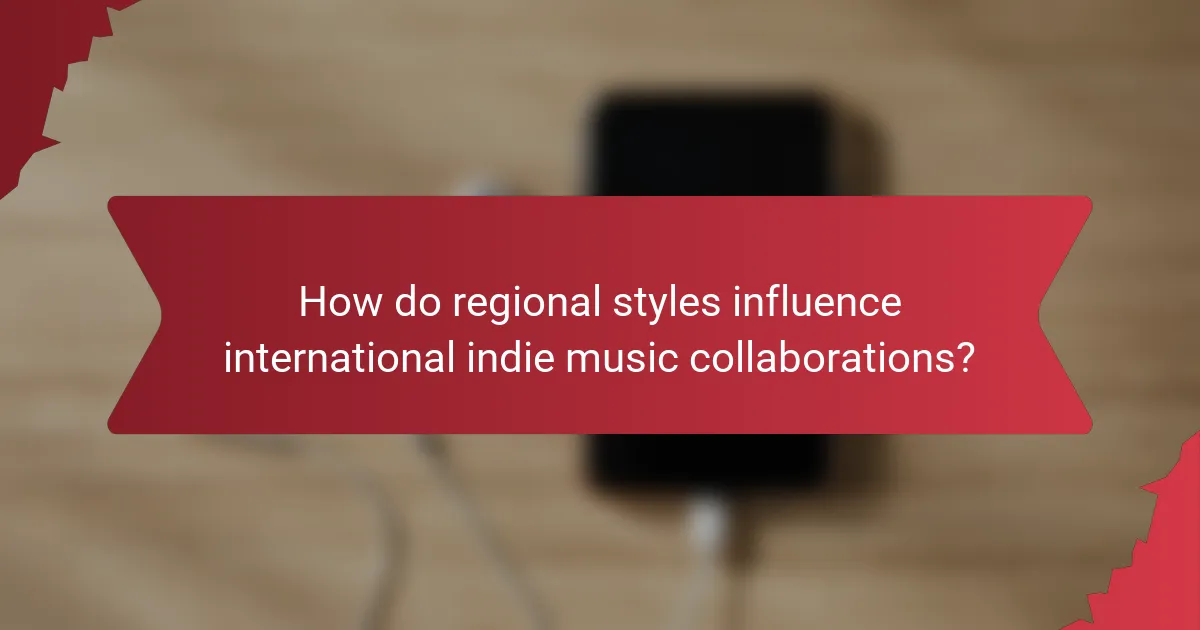
How do regional styles influence international indie music collaborations?
Regional styles significantly shape international indie music collaborations by blending diverse cultural influences, enhancing creativity, and expanding audience reach. Collaborations often fuse distinct musical elements, resulting in innovative sounds that resonate with global listeners. For example, a partnership between an African artist and a European musician can merge traditional rhythms with contemporary genres. This fusion not only enriches the music but also engages audiences from different backgrounds, creating a shared cultural experience. The unique attributes of each region’s musical heritage contribute to the overall appeal, making collaborations more impactful and memorable.
What are the defining characteristics of regional indie music styles?
Regional indie music styles are characterized by their unique cultural influences, instrumentation, and lyrical themes. These styles often blend traditional sounds with contemporary elements, creating diverse musical fusions. For instance, Latin indie music incorporates rhythms from folk traditions, while African indie can feature indigenous instruments. Audience engagement varies, with local scenes fostering intimate performances and global collaborations expanding reach. Each regional style contributes to the broader indie music landscape, showcasing distinct artistic expressions.
How do cultural elements shape musical expression in different regions?
Cultural elements significantly influence musical expression, shaping regional styles and fostering unique collaborations. Different regions incorporate local instruments, languages, and traditions, creating distinctive sounds. For instance, African rhythms blend with Western melodies in indie music, enhancing fusion genres. Audience engagement varies as cultural context affects reception and interpretation. Collaborations often reflect these dynamics, resulting in innovative music that resonates with diverse listeners.
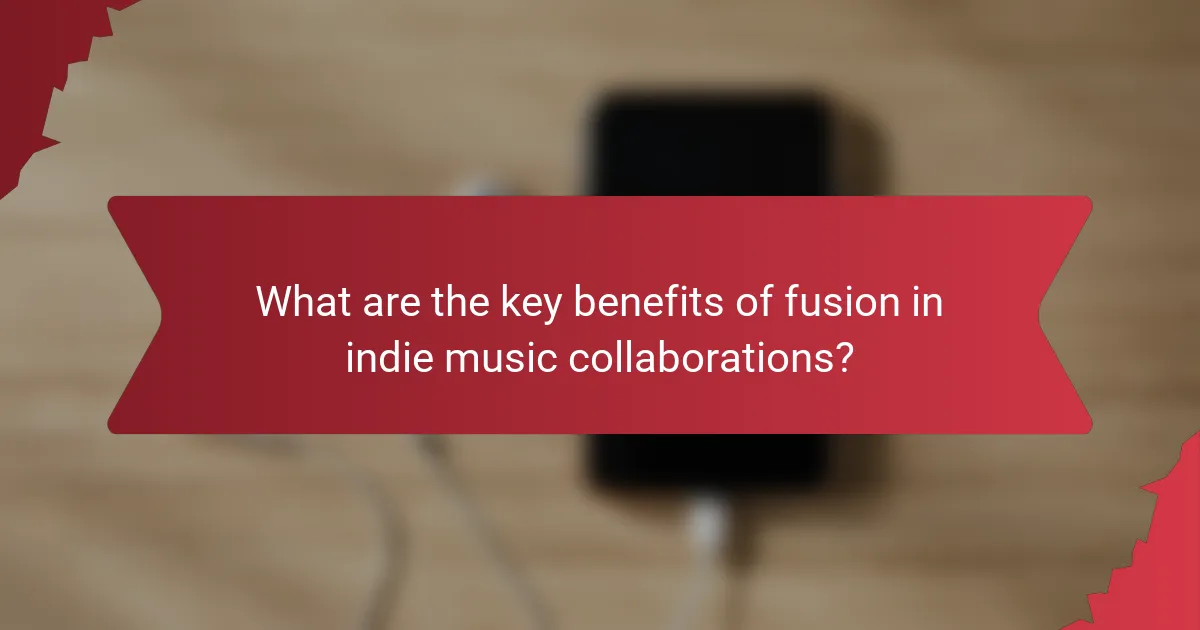
What are the key benefits of fusion in indie music collaborations?
Fusion in indie music collaborations enhances creativity, broadens audience reach, and promotes cultural exchange. Collaborating artists blend diverse regional styles, resulting in unique soundscapes. This fusion attracts listeners from various backgrounds, fostering community engagement and expanding market potential. Additionally, it allows artists to experiment with new genres, pushing artistic boundaries and driving innovation in the indie music scene.
How does fusion enhance creativity and innovation in music?
Fusion enhances creativity and innovation in music by blending diverse regional styles, leading to unique sounds. This collaboration encourages experimentation and cross-cultural exchange, inspiring artists to explore new musical landscapes. As a result, audiences experience fresh, engaging compositions that challenge traditional boundaries. Fusion not only enriches the artistic process but also fosters a sense of community among musicians and listeners alike.
What are examples of successful fusion projects in the indie music scene?
Successful fusion projects in the indie music scene include collaborations that blend diverse regional styles. Notable examples are “Buika and the Mediterranean Sounds” which fuses flamenco with jazz, and “The Very Best,” combining African rhythms with Western pop. “Tinariwen,” a Tuareg band, merges traditional desert blues with modern rock influences. These projects engage audiences through innovative soundscapes and cultural storytelling, enhancing the global indie music landscape.
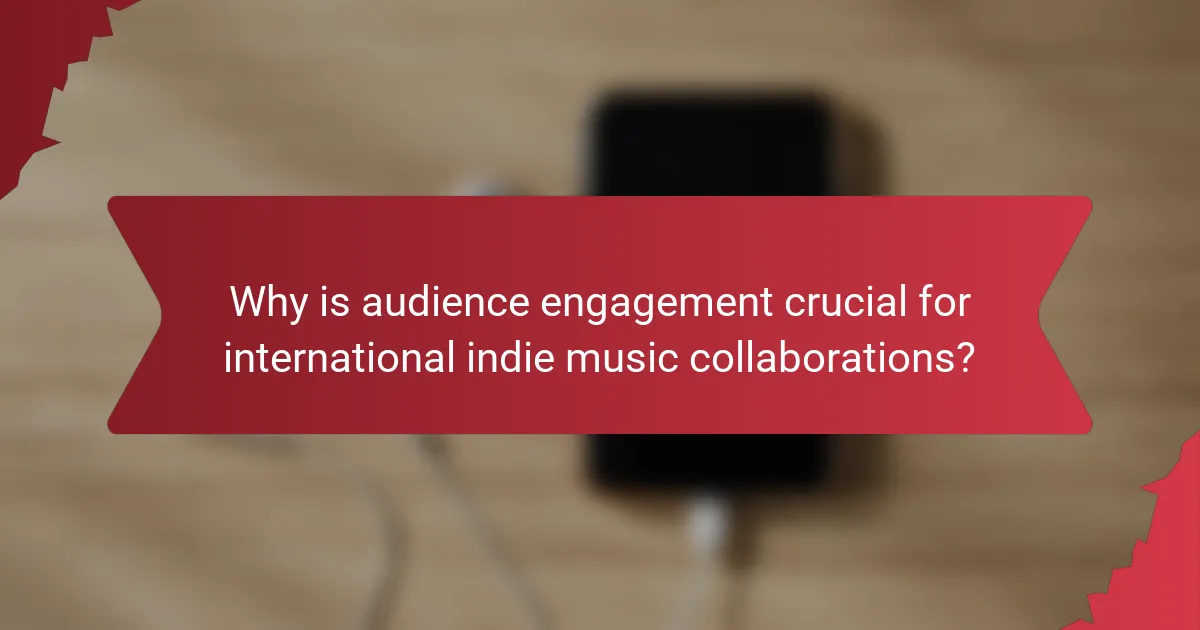
Why is audience engagement crucial for international indie music collaborations?
Audience engagement is crucial for international indie music collaborations because it fosters connection and appreciation across diverse cultures. Engaged audiences drive the success of collaborative projects by amplifying reach and ensuring authentic representation of regional styles. This interaction enhances the fusion of musical elements, resulting in unique sounds that resonate with listeners globally. Moreover, audience feedback can guide artists in refining their work, ensuring it meets the expectations and tastes of various demographics. Ultimately, strong audience engagement cultivates a loyal fan base, vital for sustaining long-term collaboration success.
How do different regions engage audiences through indie music?
Different regions engage audiences through indie music by blending local styles with global influences. This fusion creates unique sounds that resonate with diverse listeners. For instance, Latin American indie artists often incorporate traditional rhythms, while European acts might blend electronic elements. Regional festivals showcase these styles, fostering community and attracting international audiences. Collaborative projects between artists from different regions further enhance engagement, allowing for cultural exchange and innovation. This approach not only broadens the audience base but also enriches the indie music landscape globally.
What role do social media and streaming platforms play in audience interaction?
Social media and streaming platforms significantly enhance audience interaction in international indie music collaborations. They provide artists with direct communication channels, enabling real-time engagement with fans. Platforms like Instagram and TikTok facilitate the sharing of regional styles and fusion music, creating a global community. Audience feedback on these platforms influences artists’ creative processes, leading to unique collaborations. Additionally, streaming services promote diverse indie music, expanding reach and fostering cross-cultural connections.
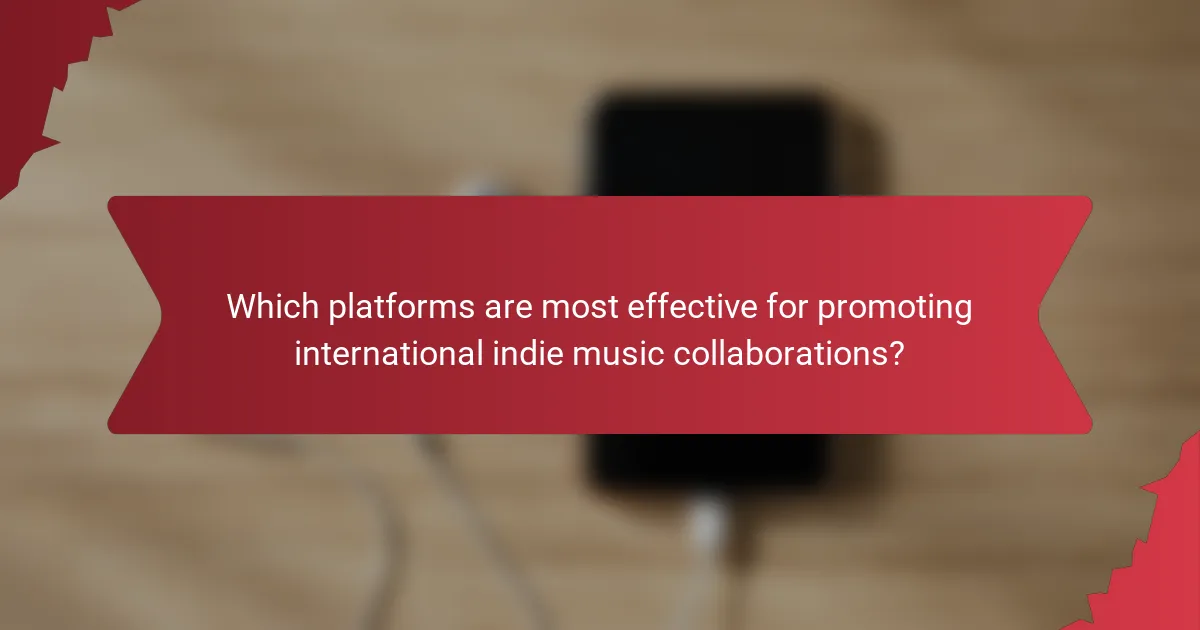
Which platforms are most effective for promoting international indie music collaborations?
Social media platforms, particularly Instagram, TikTok, and YouTube, are most effective for promoting international indie music collaborations. These platforms facilitate visual storytelling and audience engagement, essential for showcasing diverse regional styles and fusion genres.
Instagram’s visual appeal allows artists to share behind-the-scenes content, enhancing personal connections with followers. TikTok’s viral nature enables snippets of collaborative music to reach global audiences rapidly. YouTube serves as a hub for longer-form content, including music videos and live performances, which helps build a dedicated fan base.
Engagement metrics highlight the effectiveness of these platforms. For example, TikTok’s algorithm promotes content based on user interaction, increasing visibility for new collaborations. YouTube analytics provide insights into audience demographics, guiding marketing strategies for targeted outreach.
In conclusion, leveraging these platforms can significantly enhance the visibility and success of international indie music collaborations.
How do regional preferences influence platform choice and usage?
Regional preferences significantly impact platform choice and usage in international indie music collaborations. Different regions favor specific platforms based on cultural relevance and user engagement. For instance, artists from Latin America often prefer platforms that support Spanish-language content, enhancing audience connection. In contrast, European artists may gravitate towards platforms that emphasize diverse genres and collaborative features. Additionally, regional styles influence how platforms are utilized; artists in Africa might leverage mobile-friendly apps due to higher smartphone usage. These preferences shape not only the choice of platform but also the overall collaborative dynamics and audience interactions.
What are the emerging platforms for indie music collaboration and engagement?
Emerging platforms for indie music collaboration and engagement include BandLab, Soundtrap, and Splice. These platforms facilitate regional styles and fusion by connecting artists globally. BandLab offers real-time collaboration tools, while Soundtrap provides a cloud-based recording environment. Splice specializes in sample sharing, enhancing creative synergy among musicians. Additionally, social media platforms like Instagram and TikTok enable audience engagement through music challenges and live performances, fostering a community around indie music.
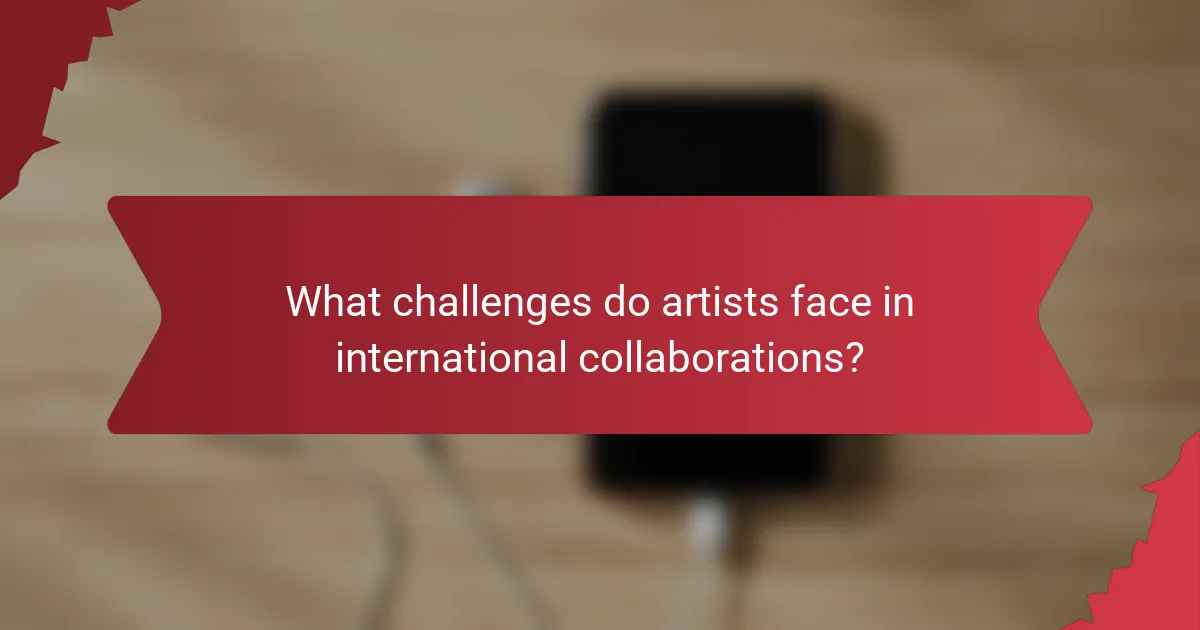
What challenges do artists face in international collaborations?
Artists face several challenges in international collaborations, including cultural differences, communication barriers, and varying industry standards. These factors can hinder creative synergy and project cohesion. For example, differing musical styles may clash, impacting the final product. Additionally, logistical issues such as time zone differences can complicate scheduling and collaboration. Engaging audiences across diverse regions also requires understanding local preferences and marketing strategies, which can be resource-intensive.
How do logistical issues affect collaborative projects?
Logistical issues can significantly hinder international indie music collaborations by complicating communication and resource sharing. Time zone differences can lead to delays in decision-making. Cultural misunderstandings may arise, impacting creative synergy. Additionally, varying legal regulations can complicate contracts and distribution. Effective planning and clear communication channels are essential to mitigate these challenges.
What cultural misunderstandings can arise during collaborations?
Cultural misunderstandings in international indie music collaborations often stem from differing musical traditions, communication styles, and audience expectations. These factors can create challenges in blending regional styles and engaging audiences effectively.
For example, artists may interpret musical elements differently, leading to conflicts in creative direction. Additionally, varying approaches to collaboration can result in misaligned goals or expectations. Understanding these differences is crucial for successful partnerships and audience resonance.
Awareness of cultural nuances enhances the fusion of styles, leading to richer musical experiences. Engaging with local audiences further helps bridge gaps and fosters appreciation for diverse influences.
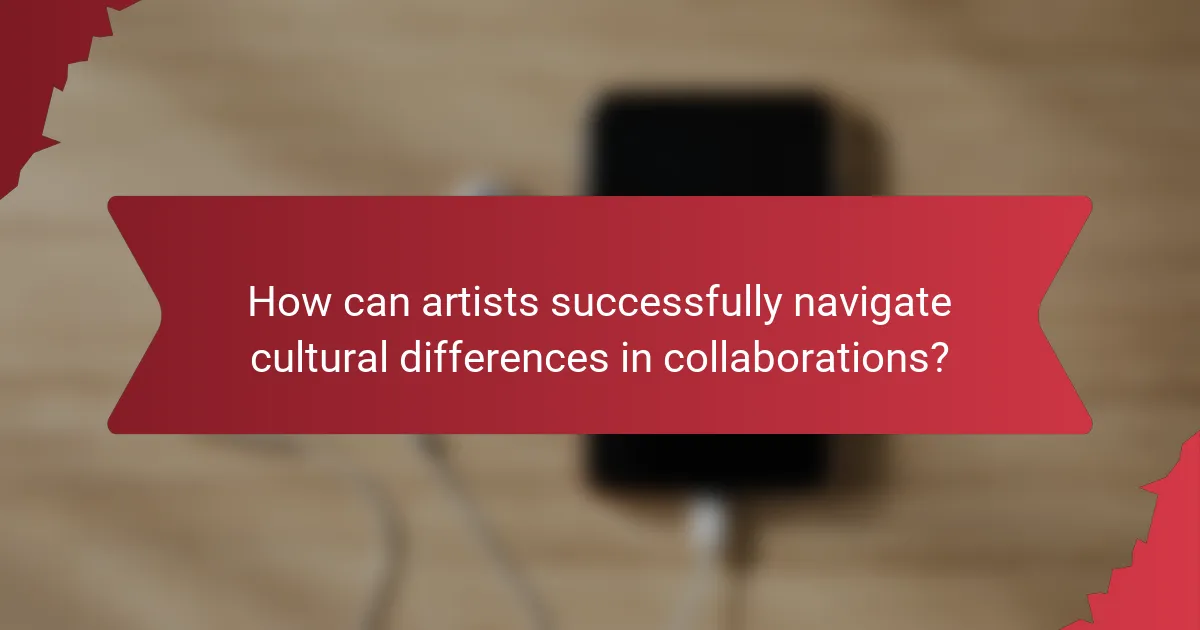
How can artists successfully navigate cultural differences in collaborations?
Artists can successfully navigate cultural differences in collaborations by embracing open communication and mutual respect. Understanding regional styles enhances fusion and audience engagement.
Collaborative projects benefit from cultural research, allowing artists to appreciate diverse influences. This knowledge fosters creative synergy and enriches the final product.
Establishing clear roles and expectations minimizes misunderstandings. Artists should prioritize flexibility and adaptability, accommodating various artistic approaches.
Engagement with local audiences through social media or live events builds trust and connection. This engagement amplifies the impact of the collaboration, ensuring it resonates across cultural boundaries.
What strategies promote effective communication among collaborating artists?
Effective communication among collaborating artists is promoted through clear expectations, active listening, and cultural sensitivity. Establishing mutual goals ensures all parties are aligned. Regular check-ins foster transparency and address issues promptly. Utilizing technology for real-time collaboration enhances engagement. Embracing diverse regional styles enriches the creative process and audience connection.
How can artists leverage cultural diversity to enhance their music?
Artists can enhance their music by embracing cultural diversity through international collaborations. This approach allows musicians to blend regional styles, creating unique fusions that resonate with diverse audiences.
Collaborating with artists from various backgrounds introduces new rhythms, instruments, and lyrical themes. For example, a fusion of Afrobeat with indie rock can attract listeners from both genres, expanding the artist’s reach.
Engaging with different cultures also fosters innovation. Artists can experiment with traditional sounds, leading to fresh musical expressions that stand out in the global market.
Moreover, cultural diversity in music can deepen audience engagement. Fans often appreciate the authenticity and richness that comes from diverse influences, enhancing their connection to the music.
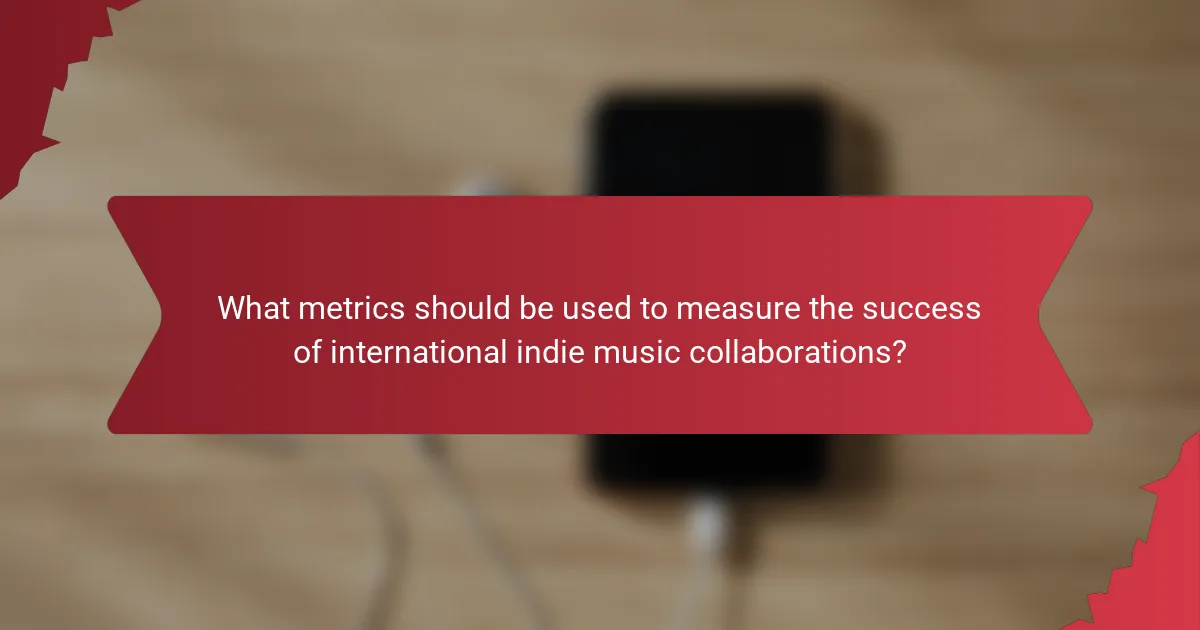
What metrics should be used to measure the success of international indie music collaborations?
To measure the success of international indie music collaborations, focus on metrics like audience engagement, streaming numbers, and social media reach. These indicators reflect the collaboration’s impact across diverse regional styles.
| Metric | Description |
|————————–|————————————————–|
| Audience Engagement | Interaction levels on platforms (likes, shares) |
| Streaming Numbers | Total plays on major streaming services |
| Social Media Reach | Follower growth and engagement across channels |
| Critical Reception | Reviews and ratings from music critics |
| Cultural Impact | Influence on local music scenes |
| Sales Performance | Revenue generated from collaborations |
How do audience reach and engagement metrics differ across regions?
Audience reach and engagement metrics vary significantly across regions due to cultural preferences and music consumption habits. For instance, in North America, digital streaming dominates, leading to high engagement on platforms like Spotify and YouTube. In contrast, regions like Africa show a strong preference for mobile downloads and local radio, impacting how indie music is shared and promoted.
Moreover, audience demographics influence engagement levels. Younger audiences in Europe may engage more through social media interactions, while older generations in Asia might prefer live performances. These differences highlight the importance of regional strategies in international indie music collaborations.
Lastly, fusion styles that blend regional sounds often resonate better in specific markets, enhancing audience connection and engagement. Understanding these regional dynamics is crucial for artists aiming to maximize their impact globally.
What qualitative factors contribute to the perceived success of collaborations?
Successful international indie music collaborations hinge on cultural authenticity, innovative fusion, and audience engagement. Cultural authenticity fosters genuine connections, while innovative fusion introduces fresh sounds. Audience engagement amplifies reach, creating a shared experience that resonates across diverse listener bases. These qualitative factors enhance perceived success, driving collaborations to thrive in a global music landscape.
What are best practices for optimizing international indie music collaborations?
To optimize international indie music collaborations, focus on cultural understanding, genre fusion, and effective audience engagement. Collaborate with local artists to incorporate regional styles, enhancing authenticity and appeal. Leverage social media platforms for promotion and audience interaction, ensuring a wider reach. Establish clear communication channels to align creative visions and project goals. Regularly assess collaboration outcomes to adapt strategies for future projects.
What common mistakes should artists avoid in cross-cultural projects?
Artists should avoid cultural appropriation, misrepresentation, and lack of research in cross-cultural projects. Cultural appropriation occurs when elements from one culture are used without understanding or respect. Misrepresentation can lead to stereotypes, which harm both the artist and the represented culture. Thorough research ensures accurate representation and fosters genuine collaboration. Engaging with local artists can enhance authenticity and audience connection.
